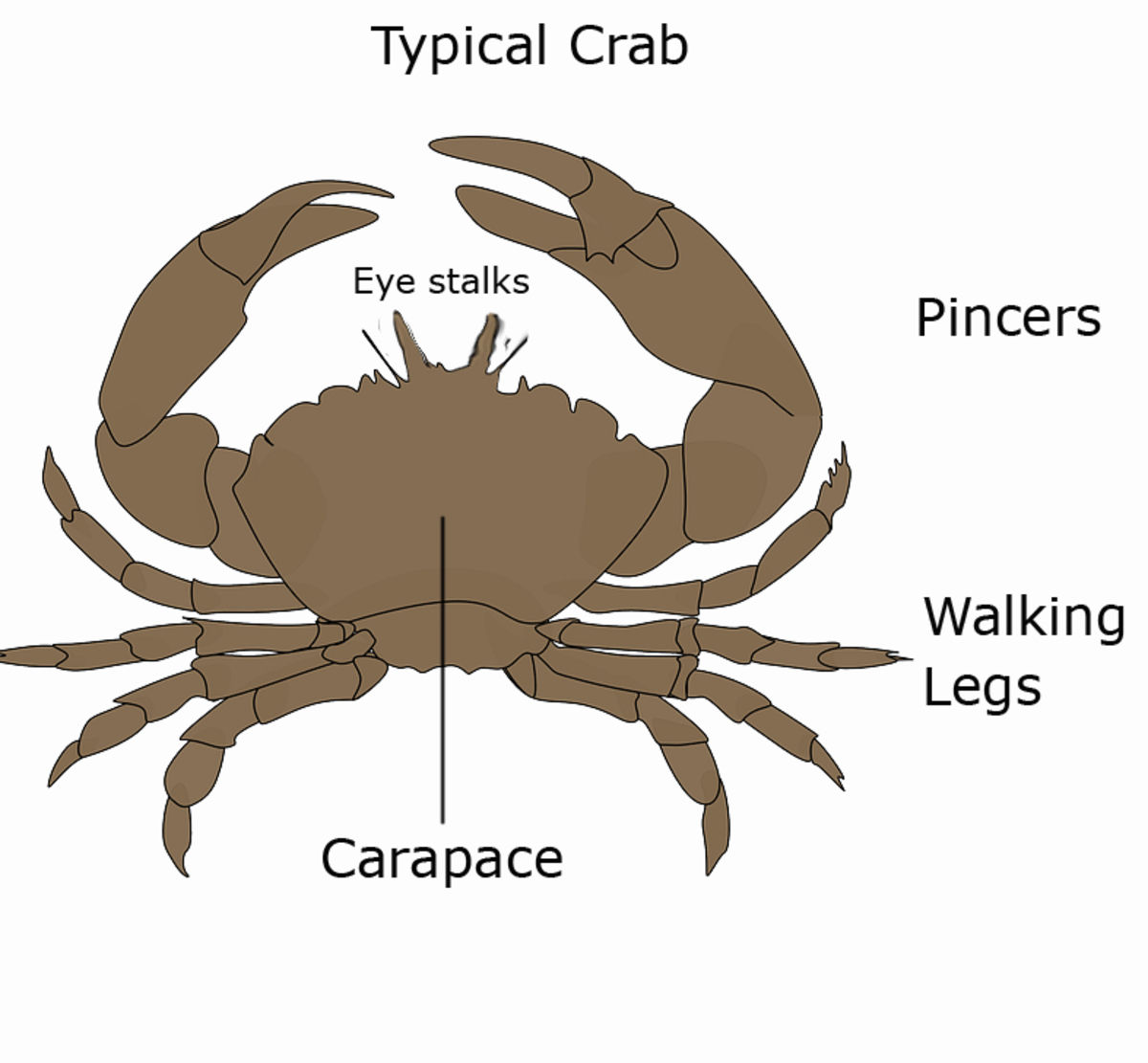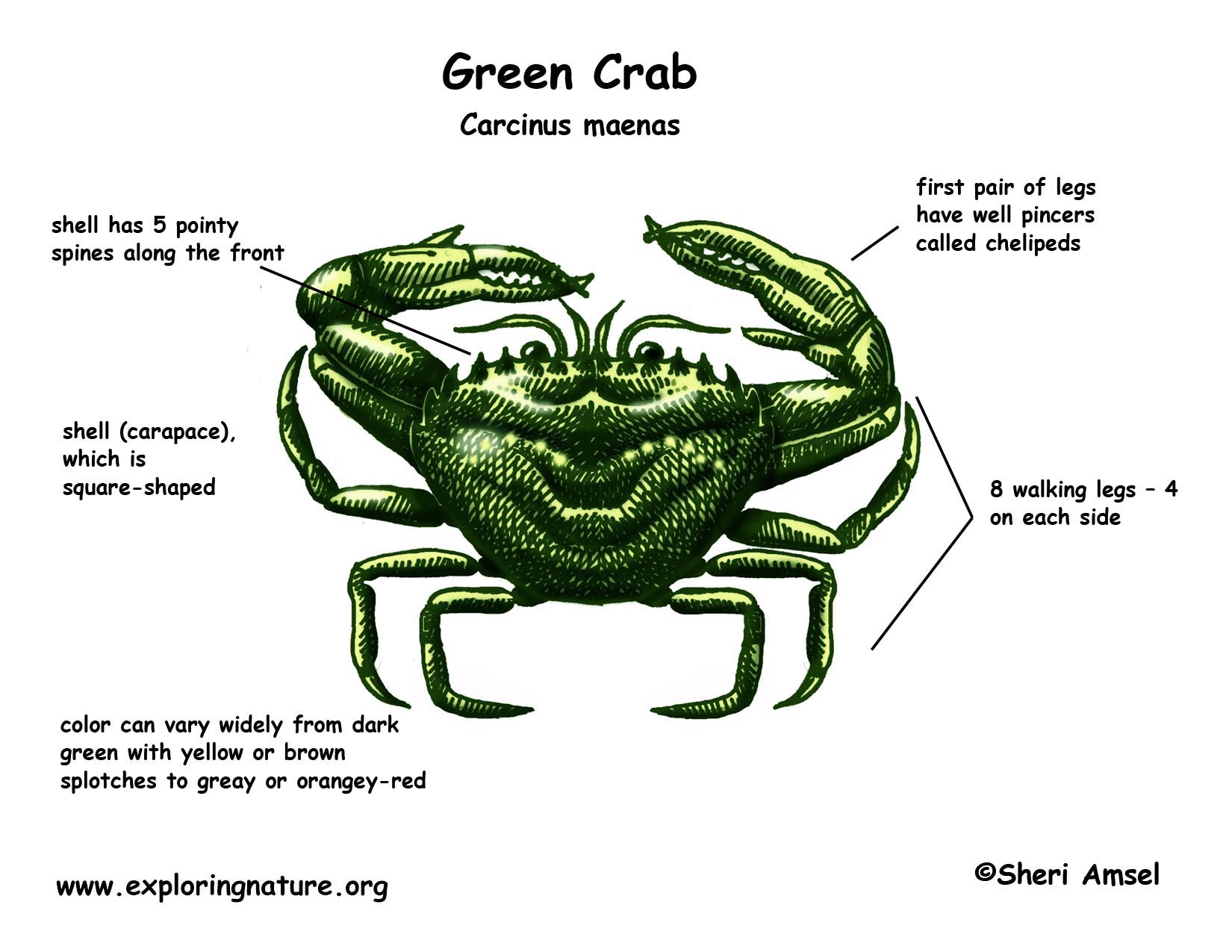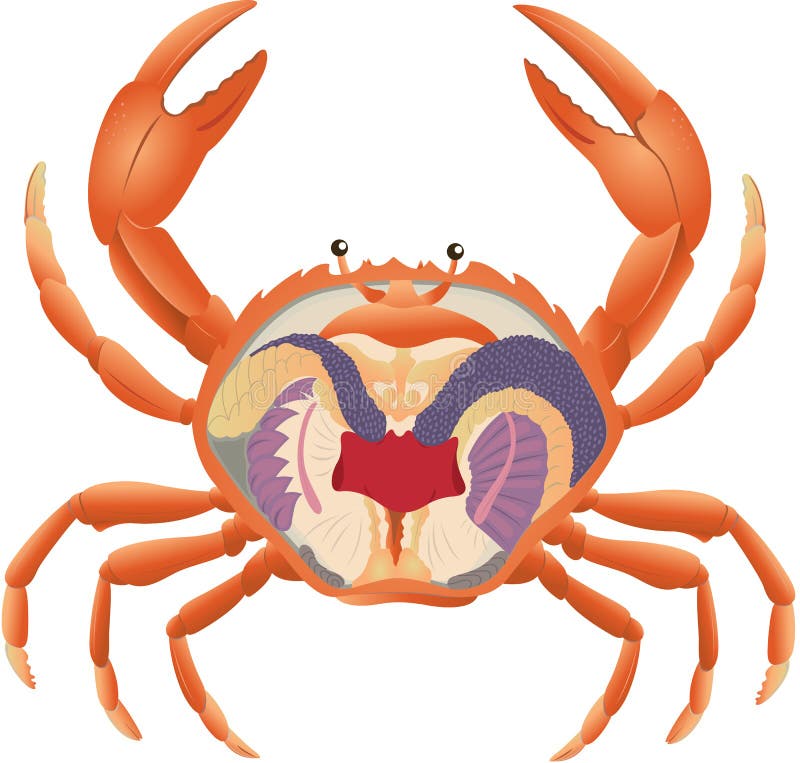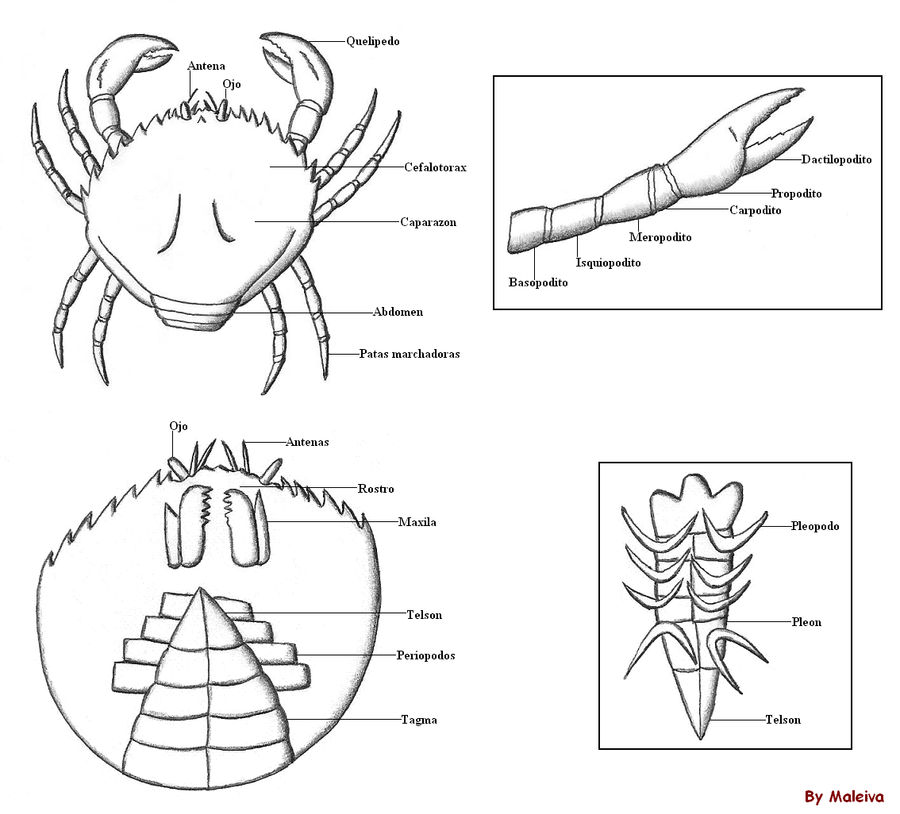
Parts of a Crab in 2020 Free homeschool
This worksheet allows students to learn the parts of a crab. Two versions included: the picture of a crab with labels and fill the labels with no word bank. Color and B&W versions are included.

Hermit Crab Anatomy
Crab Pack. Children will learn the stages of the crab life cycle, and parts of a crab, practice sequencing skills and work to improve their concentration and fine motor skills. This resource contains a crab life cycle poster, worksheet, 3-part cards, and parts of a crab printable.

Different Types of Crab (With Pictures) Owlcation
The following parts make up the anatomy of a crab: Claw or chela: The first pair of legs on a crab end with claws. Crabs use their claws to catch food, defend against predators and fight between themselves. Antenna: Crabs generally have two pairs of antennae, also known as feelers.

Dave Kellett auf Twitter "Anatomy of a Crab http//t.co/V3XtSFTXa5
1. These are commonly known as "crabs" and are found buried under rocks, wood pieces and in sand along sea shore. 2. Body is flat and covered by a carapace. It is comprised of a cephalothorax of 13 segments and abdomen is curved below the cephalothorax. ADVERTISEMENTS: 3. The cephalothorax is comprised of 13 (5 + 8) segments of cephalic and.

Crab Internal Anatomy Shrimp and Snail Breeder
10. Pea Crab. Pea crabs are the smallest species of crab on the planet, their bodies only reaching a length of up to 0.75 inches (0.02 meters). The name "pea crab" includes any crab in the genus Pinnotheres, a genus of crabs that live in the mantle cavity of some mollusks, polychaetes, or echinoderms.

Parts of a Crab Useful Crab Anatomy with Pictures • 7ESL
Crabs are decapod crustaceans of the infraorder Brachyura, which typically have a very short projecting "tail" ( abdomen ), usually hidden entirely under the thorax ( brachyura means "short tail" in Greek ). [a] They live in all the world's oceans, in freshwater, and on land, are generally covered with a thick exoskeleton, and have a single.

Crab (Green)
The size and shape of crab pincers vary depending on the species of crab. For example, fiddler crabs have much smaller pincers than blue crabs. The size of a crab's pincers also depends on its gender; male crabs usually have larger claws than females. The immovable finger is the part of the claw that is attached to the crab's body.

Parts of a Crab Useful Crab Anatomy with Pictures • 7ESL
Shows how to go about studying the external and internal anatomy of a typical crab, with footage of a variety of crabs, including the horseshoe crab (Limulus.

dc9f465b2af3253a5704a10de056edf3.jpg (1252×1619) Crustacean
Crab Anatomy 101. Crabs are arthropods, belonging to the infraorder Brachyura, and are characterized by their exoskeleton, ten legs, and distinctive sideways walking. Their bodies are divided into two main sections: the cephalothorax, which consists of the head and thorax fused together, and the abdomen. The cephalothorax is covered by a hard.

Diagram showing body part crab Royalty Free Vector Image
This is the second part of the article dedicated to the crab anatomy (the first one was about their external structure). To analyze the internal anatomy of crabs, I will divide their body into the following systems: the circulatory system, the respiratory system, the digestive system, the nervous system, and the reproductive system.

Crab External Anatomy Shrimp and Snail Breeder
Crabs have a unique body structure that is divided into two main parts: the cephalothorax and the abdomen. The cephalothorax contains the crab's eyes, antennae, mouthparts, and legs. The abdomen, on the other hand, is the soft, fleshy part of the crab's body that contains its internal organs. Additionally, crabs have two large claws, also.

Crab anatomy stock illustration. Illustration of cross 19282226
The horseshoe crab has a developed circulatory system. A long tubular heart runs down the middle of the prosoma and abdomen. The rough outline of the heart is visible on the exoskeleton and at the hinge. Blood flows into the book gills where it is oxygenated in the lamellae of each gill.

Crab body parts stock vector. Illustration of cartoon 88316336
The hemolymph cleans the internal parts when the crabs walk, and oxygen reaches them through the branchial chamber and the lungs. The heart pumps the hemolymph, which circulates within the body. When the heart eases up, the blood goes back to the core by pores called ostia. These pores replace the veins in the crab's body.

Pin on Animal
Dungeness Crab Claws. "Arguably the most delectable part of the dungeness crab is the claws. This is where you'll find the largest muscle of the crab and therefore the largest section of meat," (Leaf). You can crack the claws' shells by using fancy crab-cracking tools or by using really any hard utensil you have. Then simply peel off the.

Parts of a crab Crab soup recipes, Crab cakes, Crab legs
Starting on the Claws. Start with the legs and claws by gently pulling the lower part of each claw off. This often pulls all the inner claw meat with it, but it'll be attached to a hard, cartilaginous fin-shaped thing in the center. Just pinch the meat at the base of the claw and pull it away from the cartilage.

Parts of a crab by Maleiva on DeviantArt
A crab's body is divided into two main parts: the cephalothorax (head and thorax combined) and the abdomen. The cephalothorax is covered by a hard exoskeleton called the carapace, which protects the crab's vital organs. Crabs have ten legs, including two large claws called chelipeds, four pairs of walking legs, and two smaller rear legs.